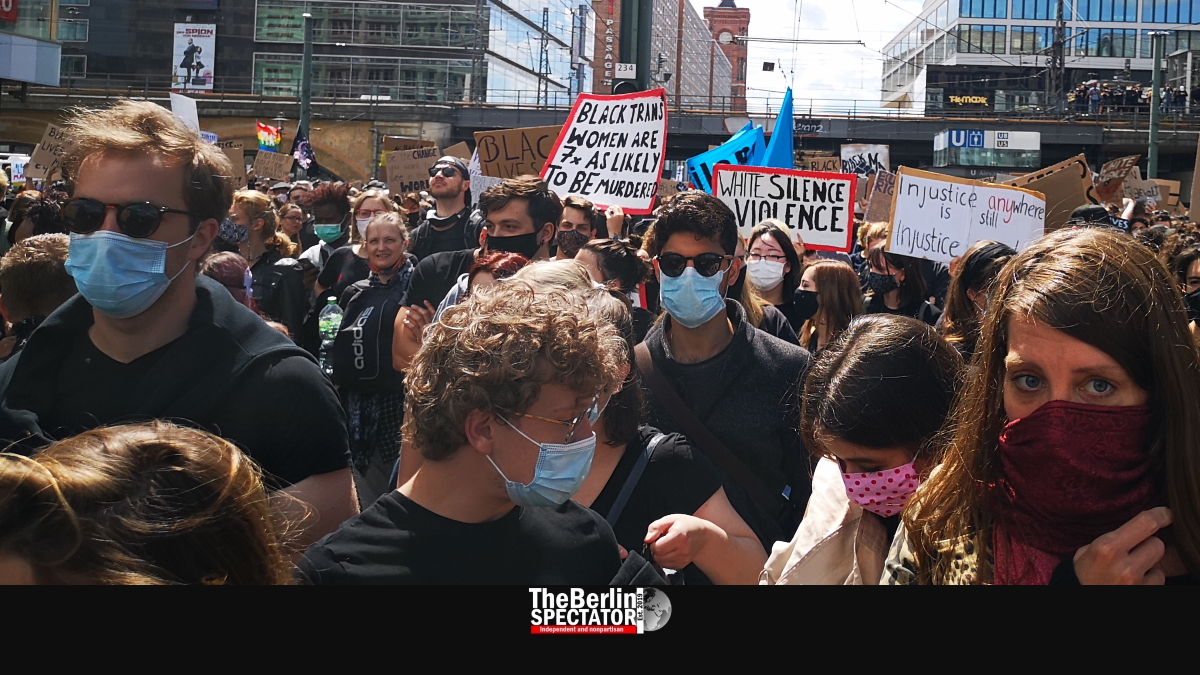Berlin, November 12th, 2020 (The Berlin Spectator) — In the Corona year 2020, the number of protests in Berlin did not decrease, in spite of it all. As a spokesman for the Berlin Police Department told The Berlin Spectator, as many as 5,010 rallies have taken place, as of yesterday. This year, Corona deniers and Nazis, but also the Black Lives Matter movement staged the biggest rallies. First, let’s rewind time by a hundred years.

In January, Britons demonstrated against Brexit. Photo: Imanuel Marcus
On January 13th, 1920, Germany’s most tragic and bloody protest ever took place. While the Weimar National Assembly was in session at the Reichstag, some 100,000 people demonstrated in front of the building. They were left-wingers who intended to show solidarity with workers who wanted more say in companies. Those who staged the protest opposed a new law that was being discussed in the parliament. The police shot at protesters. Dozens were killed in what is known as the Reichstag Bloodbath.
Berliners Against Rearmament
Another historic Berlin protest occurred over several days in late February and early March of 1942 in Nazi Germany. During the ‘Rosenstrasse Demonstration’, non-Jewish Germans, mostly women who were married to Jewish men, demanded their spouses’ release. Earlier, 2000 Jews who were part of what the Nazis called ‘mixed marriages’, had been arrested. With a lot of courage, the participants of the rally defied Adolf Hitler’s regime.

On May 11th, 1952, seven years after Nazi Germany’s unconditional surrender, Berliners took to the streets in order to protest against the Federal Republic’s rearmament. One participant was shot by the police. A year later, in June of 1953, the East German uprising against the communists in East Berlin was crushed by Soviet forces. Thirty-four protesters and several security officers were killed.
During the student revolution, on June 2nd, 1967, a rally against Mohammad Reza Pahlavi, the Shah of Persia, took place in West Berlin. A policeman shot the student Benno Ohnesorg. This deadly incident increased the tensions in West Germany’s cities.
Gulf Wars and Fukushima
On the other side of the Berlin Wall, one of the most important Berlin protests ever took place thirty-one years ago, almost to the day. On November 4th, 1989, half a million GDR citizens rallied against their country’s communist regime. Only five days later, the Wall fell.

Since then, Berliners have protested against hate, both Gulf Wars, and nuclear power. After the Japanese reactors in Fukushima blew following the tsunami, tens of thousands of Berliners were on the street, demanding the shutdown of all nuclear power plants in Germany. They will get what they wanted in 2022.
Berliners keep on staging protests today. Not all of them are big, but many are. The demonstrations the Berlin Police Department counts include those with one participant or tens of thousands of them. Individuals or organizations need to register their protests beforehand. In Corona times, the right to demonstrate was restricted in the spring of 2020 when the infection numbers skyrocketed.
Source: https://berlinspectator.com/2020/11/12/berlin-capital-of-protests-2/
[Disclaimer]








